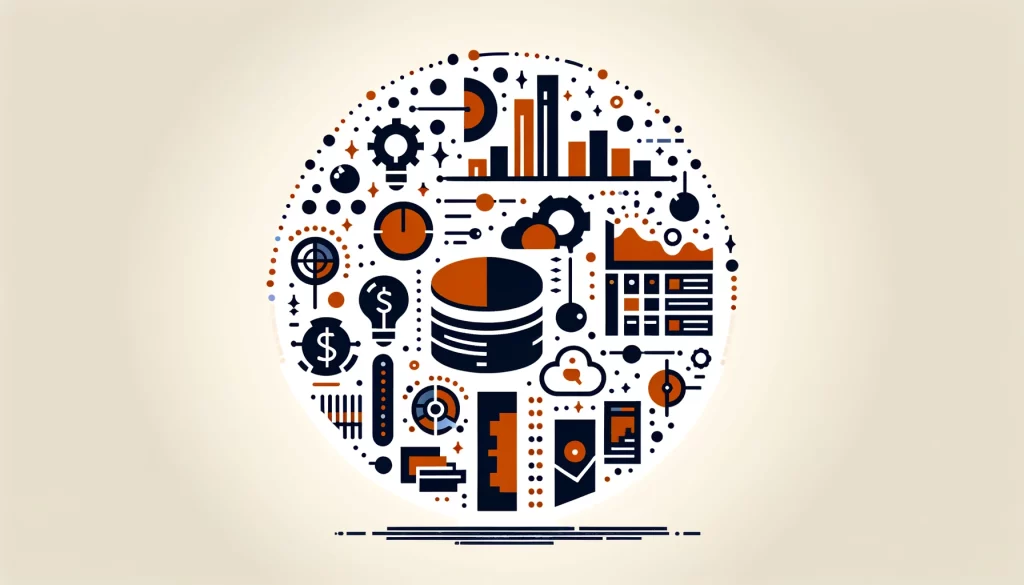
Comprehensive Guide to Infonomics

Infonomics is the discipline of managing and accounting for information as a formal business asset. By using infonomics, organizations can discover the hidden value of their data and use it to achieve business results.
What is Infonomics?
Infonomics is a term coined by Douglas B. Laney, a distinguished analyst and vice president at Gartner, Inc. He defines infonomics as the theory and practice of treating information as an actual enterprise asset. Organizations should treat information as carefully as they do with money, property, and employees. Managing and keeping track of information is important, just like other valuable assets.
The Three Pillars of Infonomics
To successfully implement infonomics, organizations need to focus on three key pillars: monetization, management, and measurement.
Monetizing Information
Monetizing information doesn’t necessarily mean selling data for cash. Instead, it involves using data to create value for the organization. You can do this by using information to streamline processes, enhance product quality, improve customer relationships, or reduce risks. By monetizing information, businesses can turn their data into a revenue-generating asset.
For example, a retailer could use customer data to personalize marketing campaigns, leading to increased sales and customer loyalty. A manufacturing company could analyze sensor data from its equipment to predict maintenance needs and prevent costly downtime. These are just a few examples of how organizations can monetize their information assets.
Managing Information
Effective information management is crucial for the success of infonomics. Organizations should set up systems and user hierarchies to keep data safe, compliant, and accessible to the right people when needed. This involves implementing robust data governance frameworks, access controls, and real-time monitoring capabilities.
Data governance is particularly important in today’s regulatory environment. Organizations must follow laws like GDPR and CCPA to collect, store, and use data correctly. Failure to do so can result in significant fines.
Measuring Information
Measuring the value of information is a complex task, but it’s essential for infonomics. Organizations need to consider the cost of obtaining and maintaining data. They should also assess the accuracy and rarity of the data.
Additionally, they should determine the potential uses of the data. Businesses can find out how valuable their data is by asking the right questions and analyzing its quality, cost, and importance.
One approach to measuring information value is to use a framework like the Information Valuation Method (IVM). This framework considers the cost of obtaining and maintaining data, its potential profit, and its significance to the organization. The framework evaluates the expenses associated with data acquisition and storage.
It also evaluates the potential revenue that the data can generate. Additionally, it examines the importance of the data to the organization. Organizations can make better decisions about managing data by putting a price on information assets and understanding their value.
The Benefits of Infonomics
Implementing infonomics can bring numerous benefits to organizations. Unlike traditional assets, information is non-depletable and retains its value through repeated use. In fact, processing, analyzing, and applying information can increase its value.
Another advantage of infonomics is that data assets are not subject to the same scrutiny as traditional assets. Businesses can manage and use their information more flexibly. This is because accounting standards and the IRS do not consider information as capital assets. This means businesses have more freedom in how they handle their information.
Infonomics also enables immediate transactions. Digital data makes it easy and cheap for businesses to quickly send information to clients all over the world. This agility can help organizations disrupt conventional business models and gain a competitive edge.
Implementing Infonomics in Your Organization
To successfully implement infonomics in your organization, you need to start by recognizing information as a valuable asset. To do this, you need to change your thinking. Make sure you value data just as much as other business assets.
Next, you need to establish a robust data management framework. This involves implementing policies, procedures, and technologies to ensure that data is secure, compliant, and accessible. You should also invest in data quality initiatives to ensure that your information is accurate, complete, and reliable.
Finally, you need to develop a strategy for monetizing your information assets. This may involve using data to improve internal processes, enhance customer experiences, or create new products and services. By aligning your data strategy with your overall business objectives, you can maximize the value of your information assets.
Challenges and Considerations
While the benefits of infonomics are clear, implementing it in an organization is not without challenges. One of the biggest obstacles is the lack of standardized methods for valuing information assets. Unlike traditional assets, there are no widely accepted accounting principles for measuring the value of data.
Another challenge is the need for a cultural shift within the organization. To see information as valuable, everyone from top executives to front-line workers must agree. Training and education may be needed to help people understand how data can be used to create value for businesses.
Organizations must also consider the ethical implications of monetizing data. Businesses need to be clear about how they collect, use, and share data due to growing worries about privacy and security. They need to make sure they use data responsibly and ethically, while respecting people’s rights and preferences.
The Future of Infonomics
As data continues to grow in volume and importance, the concept of infonomics is likely to become even more relevant in the years ahead. As organizations see the importance of their information, they will focus more on managing, governing, and making money from data.
One area where infonomics may have a significant impact is in the development of new business models. Organizations can use data as a strategic asset to develop new products and services that were previously impossible. This could lead to the emergence of companies that generate revenue primarily through the monetization of information.
Another area where infonomics may play a role is in the valuation of companies. Data is becoming increasingly important for businesses. Investors and buyers may pay more attention to a company’s information assets when assessing its value. This could lead to changes in how companies are valued and how mergers and acquisitions are conducted.
Conclusion
Infonomics is a powerful concept that can help organizations unlock the hidden value of their information assets. By treating information as a formal business asset, organizations can monetize, manage, and measure their data more effectively. This can lead to improved decision-making, increased efficiency, and competitive advantage.
While implementing infonomics can be challenging, the benefits are clear. As data continues to grow in volume and importance, organizations that embrace infonomics will be better positioned to thrive in the digital economy.
Businesses can use their data as a strategic asset to drive growth and innovation by recognizing its value.
As we progress, it is evident that infonomics will become more crucial in how organizations function and compete. By staying ahead of the curve and embracing this new discipline, businesses can position themselves for success.
